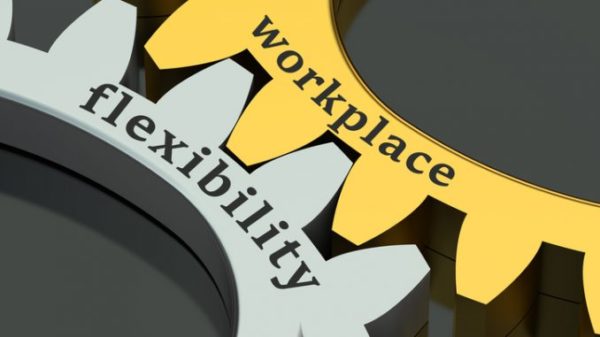5 Lesser Known Ways to Enhance Employee Engagement
A lot of research has been performed in the area of employee engagement. Companies today have adopted ways to improve and enhance employee engagement. The involvement of employees, despite their role, is vital for the team and organizational success.
Businesses have recognized its importance for better productivity and growth. They invest time and effort in research-proven ways. One of the ways is to use project collaboration software and devise strategies to improve team collaboration. Employees are the backbone of any company, irrespective of their size and industry.
Yet, there is bad news. According to 2017 State of the Global Workforce report from Gallup, 85 percent of employees are not engaged or actively disengaged. In general, as per human psychology and research, the average time an adult or a teenager can focus is less than a goldfish as per sources on websites like time and researchgate.
When it comes to performance, every employee should focus and stay engaged at work. Project Managers play a significant role in motivating and engaging their teams. Without the same, project’s success is in danger and, hence, the company’s pride, success, and reputation. Implementing stringent policies to improve team collaboration is the need of the hour. Engaged employees are beneficial for organizational growth in the long-run. And fortunately, we have great project collaboration software available for team collaboration and employee engagement.
Despite efforts and time spent on finding the ways to get employees engaged, they don’t feel involved. There are prominent ways in which employee engagement can be achieved.
There are also a few lesser-known ways that aid in employee engagement. Here, we explore the same.
Clear Organizational Chart/Hierarchy
Organizations, whether big or small, lack clarity in role delineation and, thus, create a lot of chaos. This chaos actually disrupts the line of thought for an employee. Besides, new hires get confused, being unclear about their role and its expectations. Capability and performance of employees, thus, gets affected.
So, it’s imperative that organizations take time and focus on creating a hierarchy. Employees should report to their line managers and be clear of the different levels in the organization.
As per Harvard Business Review, poor organizational structure leads to lack of coordination, failure to share ideas, slow decision making, stress, conflict, chaos, and complexity. An improved and clear organizational structure not only enhances employee engagement but also, makes team collaboration better for quick problem resolution.
Fair Policy for Contractors
Most companies don’t have similar or same policies running between contractor employees and permanent employees. Even though the contractors are under 10% in strength to the full-time employees, they are critical to the organization.
Contractors stay focused, motivated and engaged, only when they are a part of the communication process. Communication enhances the overall efficiency of the contractor. If they are excluded, there will be a lesser collaboration between peers due to lack of information. Besides, when contractors take the onus of their work, they become more productive and efficient.
Implementing Flexible Policy
In the past, some companies did away with “work from home” policies, as employees misused the flexibility offered. According to Stanford study conducted by the Economics professor, Nicholas A.Bloom and a student James Liang, remote workers are 13.5 percent more productive than office-goers. There are fewer distractions like water-cooler conversations, long lunches for employees. And there is a mutual benefit, companies can save dollars on the resources, for example, IBM saves about $100 million annually.
Companies seeking employee engagement should have a flexible culture for their workforce. A lot of project collaboration tools have been utilized by many organizations for virtual workers. Saving time and maximizing productivity goals are achieved this way.
Celebrating Small Milestones
Major releases are celebrated in most companies by having a dinner outside or at work. Since big tasks are built on smaller ones, they should be given equal importance and recognition. According to Gallup study, only 3 in ten employees receive recognition or praise for their weekly jobs. This is about 30%, which is on the lower side and needs improvement.
Driving employee engagement is not hard. A small token of appreciation can engage your employees more than before. An employer should acknowledge even the smaller milestones achieved for employee retention and job satisfaction.
To illustrate this, let us take an example. Apple uses an engagement strategy to convert its employees into brand loyals. The company is well-known for employee discounts, giveaways, and handwritten notes from managers. When superiors congratulate their subordinates, the latter feels positive and engages more in the tasks assigned.
Tête-à-Tête with Managers
When the managers schedule one-to-one time on their calendars for employees, it is important for them to keep the conversation going each month. However, with ever-changing priorities, managers, sometimes, don’t value such meetings. As a result, personal meetings are postponed or canceled. In case they are held, employees are unable to express their concerns.
Employees accountable by their managers are more engaged than others. Taking time out to have one-on-one meeting with your direct reports is crucial to engagement. In the current virtual culture, many project management tools have helped understand the merits and drawbacks of such conversations.
Gain Leadership buy-in
Another way that companies of today can use to keep their employees involved is leader engagement. You can urge leaders to create and share a powerful mission, vision, and values. They can set a tone for employees’ code of conduct. Leaders are capable of modeling effective performance for those who work with them. Leadership passion and engagement is, of course, contagious.

Data shows direct link between leadership attitudes and employee engagement. Companies that have the lowest levels of engagement are led by people who are non-serious for it. Lack of senior leadership buy-in is the biggest obstacle to a successful initiative taken for employee engagement. Companies and leaders need to understand the importance of employees’ confidence. When leaders value their human resources, set the right course for them, and make them feel great while working, engagement automatically increase.
Listen to your people
Employees should be considered a valuable information source. They see things in a fashion different than the manager or, the leader, as they directly interact with customers. They are known to be the front line of customer interaction. Managers can create employee listening programs, where employees share their ideas and thoughts. It is crucial to discuss, hear, and consider what they have to say. Companies can annually or biannually send surveys to their employees. Doing so helps to collect feedback on what works, what changes need to be implemented, and what people care for the most.
Good employers listen to staff. Your employees want to be heard. They will surely become disengaged when you are unheard and easily find their way to your competitors. In the words of Iain Thomson, Director, Incentive and Recognition, “becoming the ‘employer of choice’ is going to be the biggest challenge over the next 10 years. It all begins with listening. Lifting up the bonnet and finding out exactly what’s going on.”
In his book, “How to Win Friends and Influence People”, Dale Carnegie talks much on listening. According to him, “80 percent of those dissatisfied with managers also get disengaged from employers. Good leaders are always in high demand, as they give employees everything they need to deliver exceptional work.
Conclusion
Employee engagement is critical to the success of any organization. Leaders should lean forward to learning and implementing these and more ways.
In today’s stressful and complex work culture and lifestyle, every manager and leader needs to implement powerful ways of employee involvement. Your employees engage more when there is cohesive team building.
In the end, we can say that engagement makes employees happy. Happy employees are healthy and are motivated to give their best shot. Fortunately, you have access to various project management software for better team collaboration, and ultimately, engagement.
Author Bio
David is a technical writer currently associated with ProProfs Project. He enjoys writing about emerging project management products and its latest trends. He lives in Detroit, Michigan with his wife. In his spare time, David loves exploring the city, listening to Metal music and riding. To connect with David go to his LinkedIn profile.


















